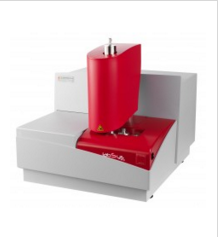
特征
LABSYS evo DTA/DSC relies on the ideal design of the LABSYS evo furnaces – both 1150 °C and 1600 °C versions – and gas flow control unit, with a perfectly centered rod, locked in that position.
CP ROD
To increase the sensitivity of Cp measurements it is necessary to increase the
mass, the sensitivity of the sensor and the heating rate of the furnace. This
is made possible thanks to the 3D Cp rod because of the large size of its
crucibles (380 μl), the high sensitivity of its 3D Calvet type sensor (up to
0.5 μV/mW), which is composed of 10 thermocouples in series, and the high
heating and cooling rate of the LABSYS evo furnaces (100 °C/min). It is now
possible to have Cp measurements within 2 % accuracy, on the whole temperature
range (RT – 1 600 °C).
應(yīng)用案例
While DTA is
mostly used to determine the temperature at which heat effects occur, properly
calibrated DSC rods lead to more accurate determination of the amount of heat,
whereas the 3D Cp rod is ideal for heat capacity.
Curie points, glass transitions, phase transitions, crystallinity,
crystallization temperatures and kinetics, and heat capacity are typical
measurements achieved by the LABSYS
evo DTA/DSC.

 023-68086963
023-68086963


 2016-09-20
2016-09-20  admin
admin